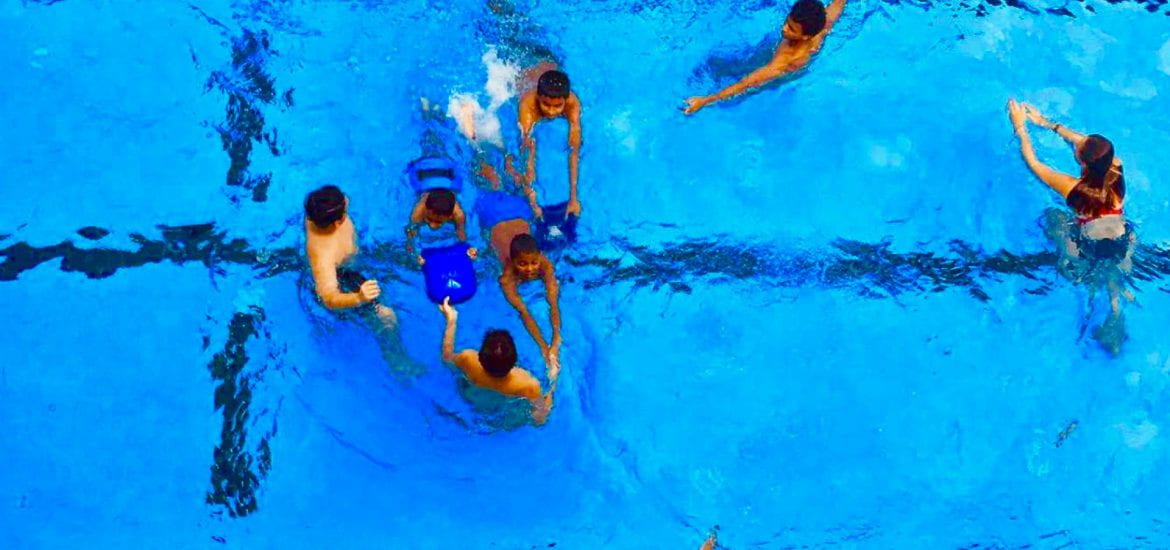After long periods of thought on what my CAS project should be, I, alongside my fellow service leaders, decided to base it on our service group (Gecko Inc.). As mentioned in previous posts, I am one of three service leaders of the Gecko Inc. service group, which aims to teach younger kids from local schools how to be comfortable in the water; teaching them basic skills and engaging in fun, engaging water activities.
We used to meet once a week, every Thursday, however, due to the pandemic, that hasn’t been possible for this entire school year. Therefore, we haven’t been able to physically meet with the kids for an extended period of time.

In light of the current situation, we, as service leaders, decided to take action and began brainstorming possible ideas of what we could do to remain engaged with the kids from a distance. After some time, we decided that the best and most useful way forward, for both ends, was to records instructional videos and upload them on the official Gecko Inc. Youtube Channel and Instagram account, so that it’s available easily through the internet to any of our students and kids we coach.
As part of the planning process, and before initiating any type of filming, we created a digital document in which we all input our ideas as to what to record and in what order. Additionally, we formulated a script, which each had an intentional video clip to go alongside it, so as to record our voice over them while the video is rolling. After 2-3 weeks of planning the document, we began the recording process.
We decided to meet up (the 3 service leaders), alongside 3 OSC members of the group, in order to record the videos. They all came to my house, following the government guidelines and Covid-19 protocols, and we recorded multiple clips of different swimming techniques, primarily focusing on the basics, as our students are mostly below the age of 8 and require assistance in the water. We filmed over 30 short clips, each lasting between 5-15 seconds so that we were able to select the best and most coherent ones later.
After having recorded the video clips, we began the process of recording the voice-overs which were done, in part, by every member of the group so as to include everyone and make sure we were all aware of the necessary techniques needed to teach the kids once face-to-face contact is viable again. The voice-overs included the description of the techniques that are being demonstrated in the clips such as; blowing bubbles, kickflips, swimming with a board, and freestyle.
Down below is an example of a voice-over that I did, that was recorded over a clip of our members blowing bubbles:
“One of the most important abilities for beginner swimmers to develop is blowing bubbles. Such a skill can serve as an effective starting point for getting comfortable with the water and will eventually help you learn to breathe properly while swimming. To blow bubbles underwater, inhale deeply, dip your head under while holding your breath, and slowly exhale without resurfacing. Once you’ve blown all of the air out of your lungs, come back up to the surface and inhale again. You can repeat the process as many times as you want, and we recommend practicing it until you feel totally comfortable exhaling underwater. When you are practicing blowing bubbles, you can be standing or floating.”
After having recorded all of the audios, the editing process began, where the clips were merged together with the voice-overs. The video ended up being a little under 2 minutes, which is a good overview for beginners to keep the techniques and styles in mind for when they’re near a body of water or when they continue their training with us in person.
Here’s the link to the video: https://drive.google.com/drive/u/2/my-drive
We then proceeded to upload the video to youtube, a platform that is available for free to anyone with access to the internet, which makes it more accessible to our students and the kids we train. Throughout the whole process, there were a few things we had to keep in mind, such as; our student’s accessibility to the internet, the language barrier (using basic English for those who are local and speak only Sinhalese to understand), the difference in swimming abilities (some are more comfortable in the water than others; therefore the basics was best to record as it applies to anyone, even the advanced), the fact that many won’t have access to a body of water (we kept this in mind and therefore focused on depicting techniques and introducing them to swimming-specific language so to keep it in their heads for when they do have access to a pool or beach to swim and practice their skills in).
However, with such ideas in mind, our video and first chapter of the swimming videos was a success. We were able to provide our students with a refresher of the basic swimming techniques and skills needed to begin to be comfortable in the water and gave them a resource to be more aware and knowledgeable on the basics of swimming.
Despite it being far better to meet in person and teach them in such a manner, the current situation is not allowing for that to happen, so given the circumstances, I believe we did a great job in implementing our skills and getting together to provide the kids with meaningful resources that aid the development of their swimming techniques. 🙂
